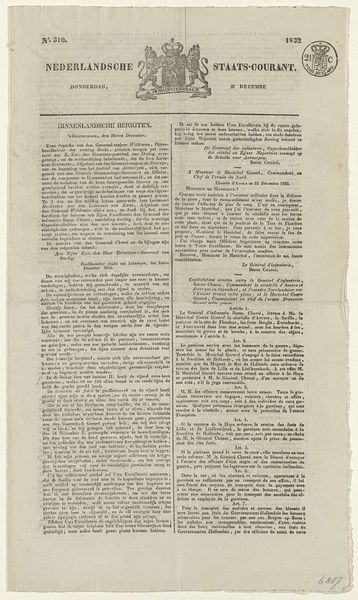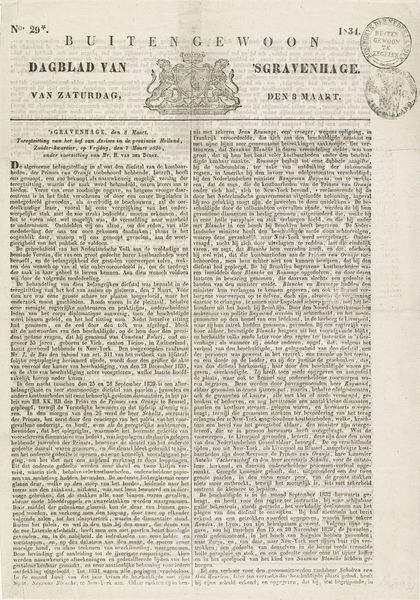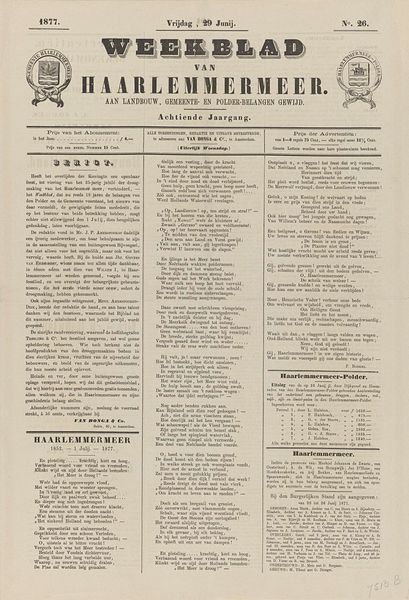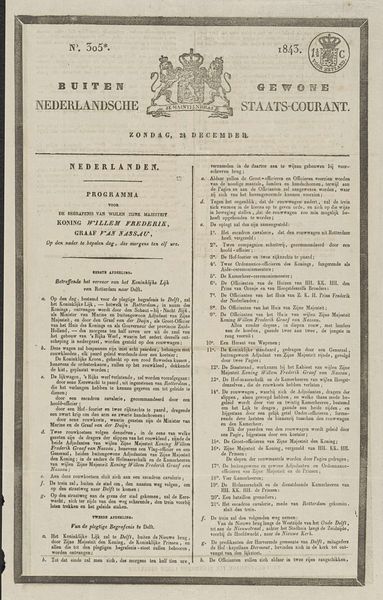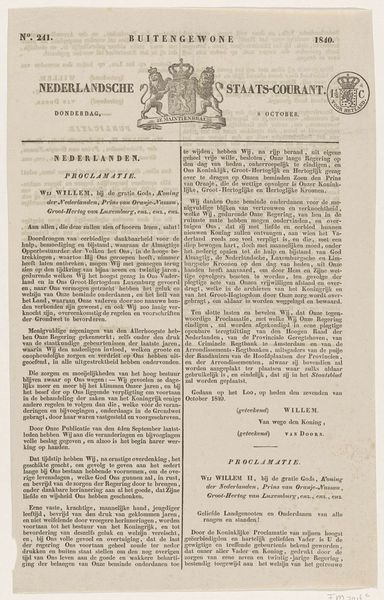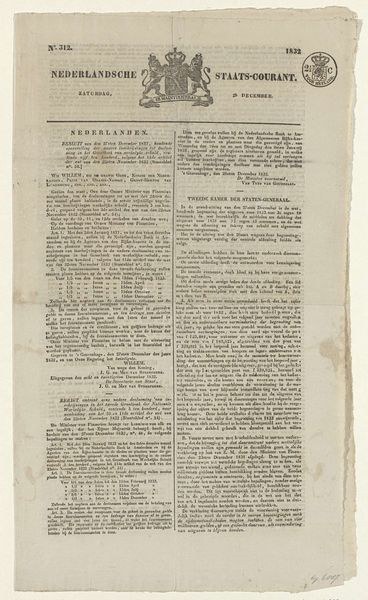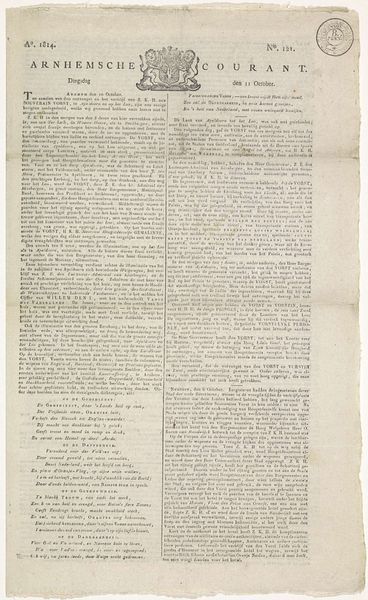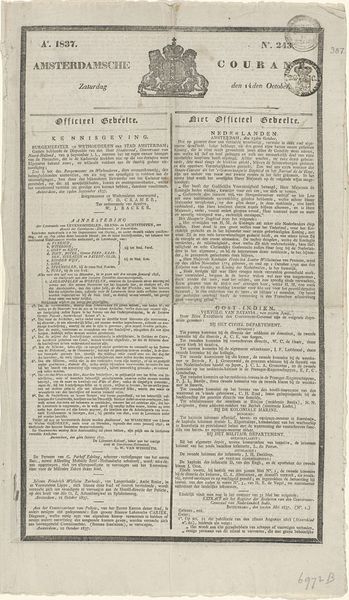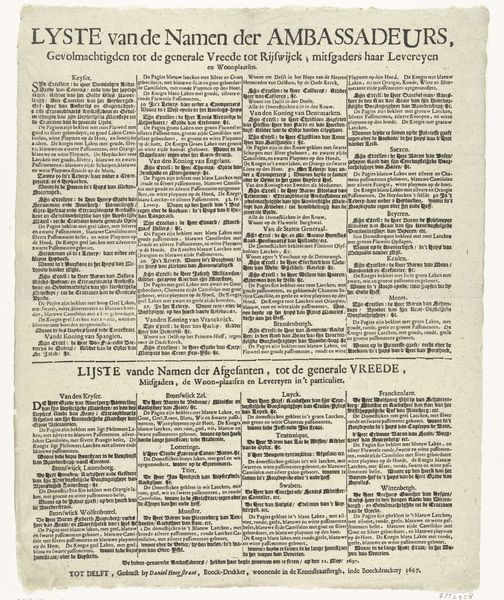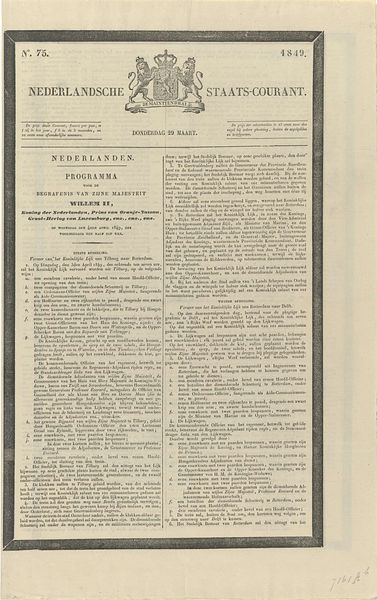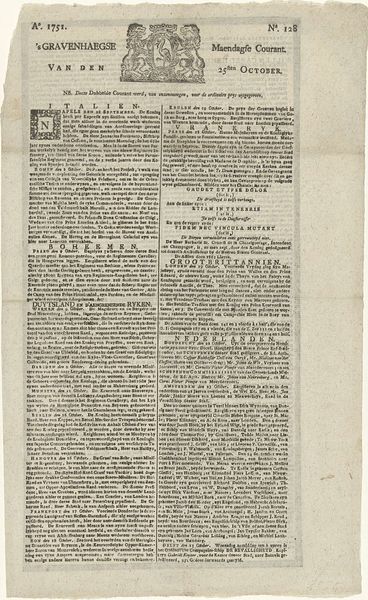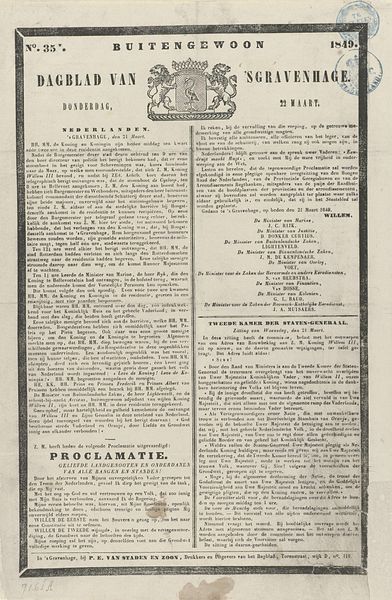
Verslag van de begrafenis van Jan van Speijk, 1832 1832 - 1835
0:00
0:00
gebroedersdiederichs
Rijksmuseum
print, textile, typography
#
aged paper
#
dutch-golden-age
# print
#
hand drawn type
#
textile
#
typography
#
fading type
#
script
#
stylized text
#
thick font
#
history-painting
#
handwritten font
#
classical type
#
historical font
#
columned text
Dimensions: height 397 mm, width 270 mm
Copyright: Rijks Museum: Open Domain
Editor: Here we have "Verslag van de begrafenis van Jan van Speijk, 1832," a print from sometime between 1832 and 1835, housed in the Rijksmuseum. It’s all text, very dense. What draws my attention immediately is the aging of the paper, it adds to the feeling of history. How do you interpret this work? Curator: This piece compels us to consider the means of its production and its role within 19th-century Dutch society. It's a mass-produced print, likely intended for wide distribution. Note the emphasis on typography - various fonts and styles meticulously arranged. The physical labor involved in setting each letter for printing is considerable. Editor: So, not just information, but also a crafted object intended for consumption. Curator: Exactly. We can look beyond the surface narrative of Jan van Speijk’s funeral, towards understanding the networks of labor and material circulation at play. What kind of person would buy such a print? What sort of political statement might such ownership imply? Editor: I suppose that it spoke of the widespread reverence of the fallen soldier, considering the labor that was put in printing so many copies of this report. Curator: Indeed. The production challenges the distinction between art and craft. Is the artisan a mere technician, or are they collaborators in shaping collective memory and national identity through these mass produced images? What does it tell us about Dutch society in that period? Editor: I didn't consider how much labor and craft was embedded in the print itself, nor its original purpose. Curator: It underscores how seemingly simple objects can unlock deeper understanding about historical contexts and processes of production.
Comments
No comments
Be the first to comment and join the conversation on the ultimate creative platform.
